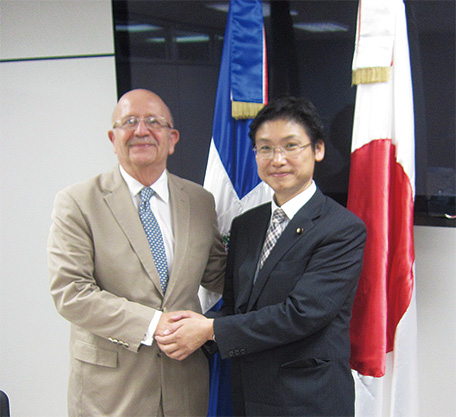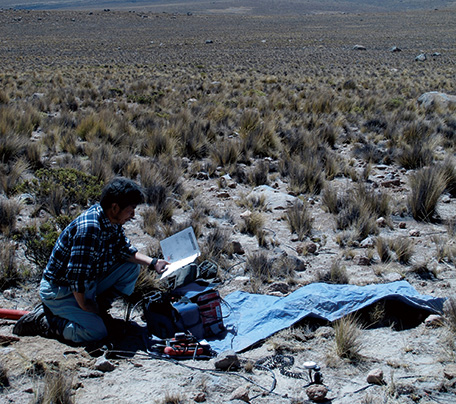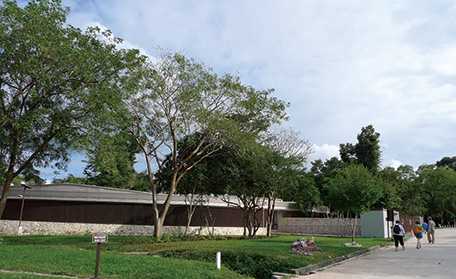Japan's Official Development Assistance White Paper 2012
6. Latin America and the Caribbean
With a population of 590 million, Latin America and the Caribbean is an enormous market that boasts a regional gross production of $4.8 trillion. The region has been also increasing its presence in the international community through the establishment of democracy and stable growth, playing a role as a provider of steel, copper, silver, rare metals, crude oil, natural gas, biofuels, and other minerals and energy resources, as well as food resources. Although the average income level in the region is relatively high among ODA recipient countries, the region is also characterized by a significant income disparity between the rich and the poor and a large number of people suffering from poverty. In addition, while the region is abundant with natural environments such as the Amazon Rainforest, it is also vulnerable to natural disasters such as earthquakes and hurricanes. Therefore, efforts to address the environment/climate change and disaster prevention are also important.

Carlos Morales Troncoso, the Domincan Republic's Minster of Foreign Affairs and Kenta Wakabayshi, Japan's Parliamentary Vice-Minister for Foreign Affairs, hold a conference.
<Japan's Efforts>
Japan has traditionally had a friendly relationship with the countries of Latin America and the Caribbean. Through ODA, Japan provides support to those countries in achieving sustainable growth, reduction of poverty, correction of disparities, and consolidation of peace, South-South Cooperation*, etc. Assistance for sustainable growth in Latin America consists of aid for the improvement of infrastructure, the human resource development in various fields. In addition, Japan provides assistance for social development, such as health and medical care, education, and community development, in order to reduce poverty and improve the income gap, which are historical challenges in the region. Furthermore, Japan has provided emergency and reconstruction aid to countries affected by natural disasters, such as the earthquake which devastated Haiti in January 2010.
Japan cooperates with the Central American Integration System (SICA), the Caribbean Community (CARICOM), and other regional organizations to formulate wide-ranging projects in order to implement more effective and efficient aid related to development issues that are shared throughout Latin America and the Caribbean. For example, Japan has been cooperating with CARICOM member countries in a wide range of fields such as integration into the global economy, the environment and climate change in accordance with the Japan-CARICOM Partnership Programme.
Japan's long years of economic cooperation have paid dividends in Brazil, Mexico, Chile and Argentina. These four countries have reached the stage where they can finally start contributing to third countries and now cooperate with Japan on third country training* sessions, dispatching third country experts* and other support for countries in Latin America, Africa and beyond. For example, Japan works together with Brazil to provide agricultural development projects to Mozambique in Africa. Japan also worked with Mexico, Argentina, and the Dominican Republic to provide assistance in the reconstruction process after the earthquake in Haiti.
In addition to deforestation of the Amazon Rainforest, there are other environmental problems in Latin America and the Caribbean such as the growing hole in the ozone layer, declining glaciers in the Andes caused by climate change, and frequent natural disasters such as hurricanes. Japan provides assistance for natural environment conservation and disaster reduction in order to halt these problems and mitigate their impacts.
Under the public-private partnership (PPP), Japan cooperates in introducing the Japanese ISDB-T standards for terrestrial digital TV. By June 2012, this system will have been adopted by 10 Latin American countries. Japan supports these countries by transferring technology and training experts to enable smooth implementation of the system.
Moreover, Japan dispatched the Medical Team and Self-Defense Force Unit of Japan Disaster Relief (JDR) Team immediately after the earthquake in Haiti, provided medical services, food, water, and shelters through the cooperation with international organizations and supported relief activities through Japanese NGOs. To date, Japan has provided over $100 million in assistance for reconstruction efforts and will continue providing Haiti medium- to long-term earthquake reconstruction support, with a focus on basic social services such as health, sanitation and education.
Furthermore, Japan provided emergency relief goods, such as generators and blankets to El Salvador, Honduras, and Nicaragua, all countries that were hit hard in floods caused by stagnating tropical storms in October 2011.

A Japanese experts explores a promising heat source in the mountainous regions of Peru. (Photo: JICA)
- *South-South Cooperation
- Cooperation provided by advanced developing countries to other developing countries, using their own personnel and experiences in development. In most cases it is conducted among countries that have similar natural environments and cultural and economic circumstances, and are at a similar stage of development, etc. In addition, support by donors or international organizations for cooperation between such developing countries is referred to as "triangular cooperation."
- *Third Country Training
- Training provided by developing countries that receive funds and technical assistance from donor countries and international organizations. These developing countries accept trainees from other developing countries, and transfer/disseminate development experience, knowledge, and technology. Japan provides financial and technical support for such efforts.
- *Third Country Experts
- A system in which experts are sent from developing countries to other developing countries in order to provide effective technical cooperation.
●Guatemala
Project for Construction of Center for Conservation and Research of
Cultural Heritage of Tikal National Park
Cultural Grant Aid (March 2010 - July 2012)
With giant pyramids towering over jungle, Guatemala's Tikal National Park, composed of a nature reserve and cultural heritage of the Mayan civilization, was registered as a UNESCO mixed World Heritage in 1979. It is now a prominent Guatemalan tourist site, attracting over 200,000 visitors a year. Tikal is one of the largest archeological sites of the Mayan civilization, with precious cultural assets like stone carvings and ceramics excavated. However, Guatemala had no facilities to preserve and restore these cultural assets, and they were facing serious risk of deterioration or damage.
Under these circumstances, Japan established the Center for Conservation and Research of Cultural Heritage of Tikal National Park, a complex facility that allows Guatemala to preserve and restore the precious cultural assets of Tikal, conduct research, and offer educational awareness programs for tourists. This project promoted "Visibility of Japanese Aid" in terms of the installation of Japan's advanced environmental technologies to minimize environmental burden as well as the involvement of Japanese researchers. A Japanese university has concluded an academic exchange agreement with the Guatemalan Ministry of Culture and Sports, with plans to make the center a focal point of their research activities.
In the future, it is expected that this cooperation between Japan and Guatemala will promote preservation and research of Tikal and encourage protection of cultural heritage and promotion of culture in Guatemala.

Exterior of the Center for Conservation and Research of Cultural Heritage of Tikal National Park

The center's exhibition hall


